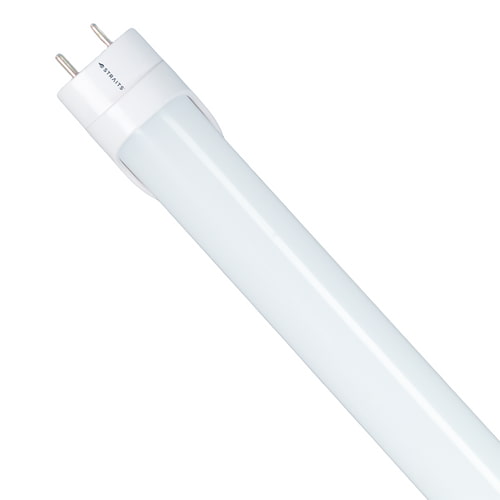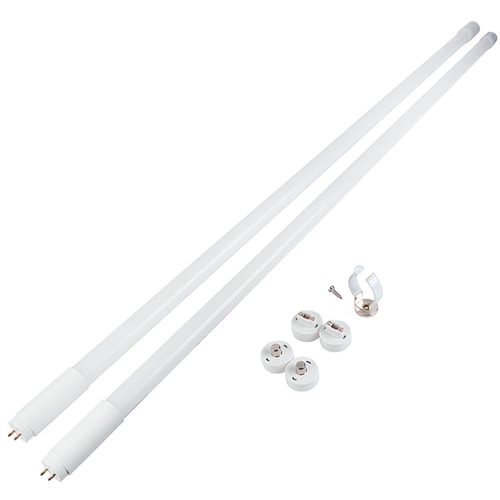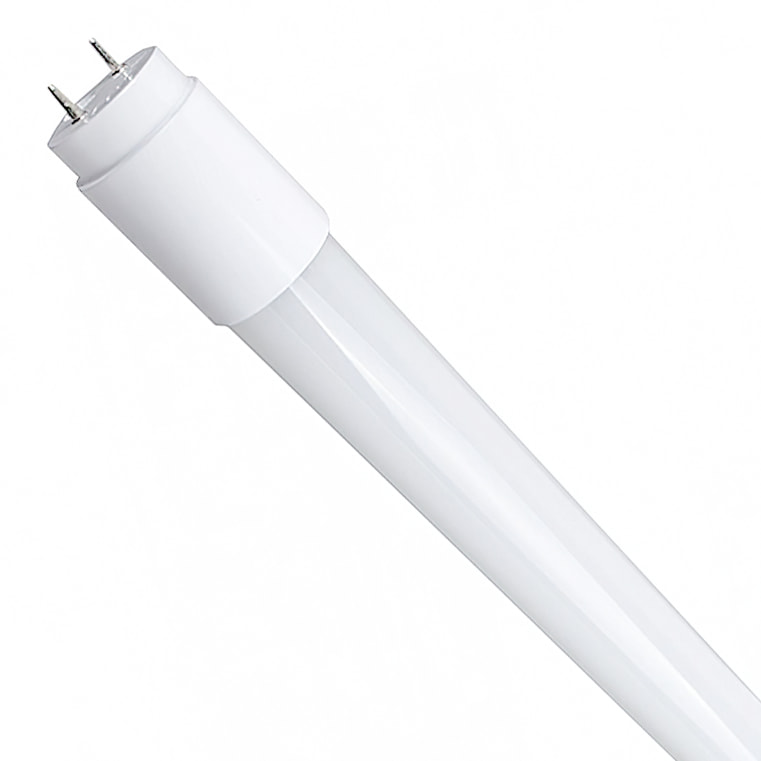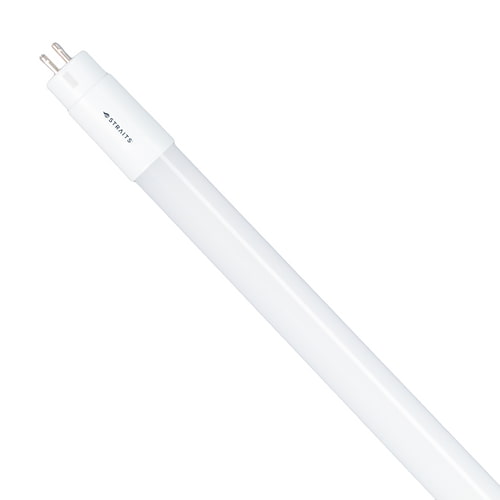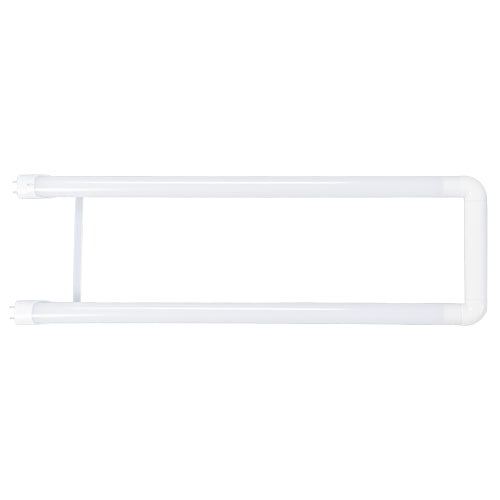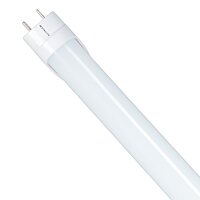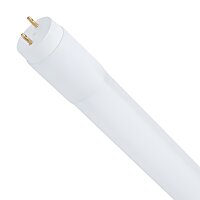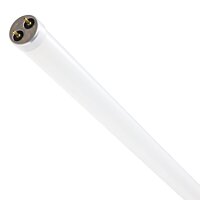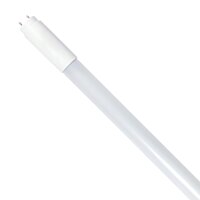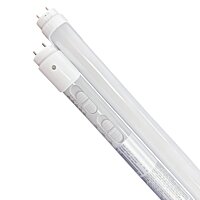LED Tube Light Information Center
Different Types of LED Tube Lights
Navigating the LED tube market is often highly confusing due to the many variations in length, color, operation, etc. This page provides a simplified overview on LED tubes so you can determine the best option for your individual lighting needs.
To provide a brief overview, LED tubes can be categorized by several factors including,
- Length (i.e. 3 ft. 4 ft.)
- Diameter (i.e. T8, T5)
- Color Temperature (i.e. 5000 Kelvin, 4000 Kelvin)
- Operation (i.e. Plug-n-Play, Direct Wire)
- Brightness (Wattage / Lumen Output)
LED Tube Light Diameter
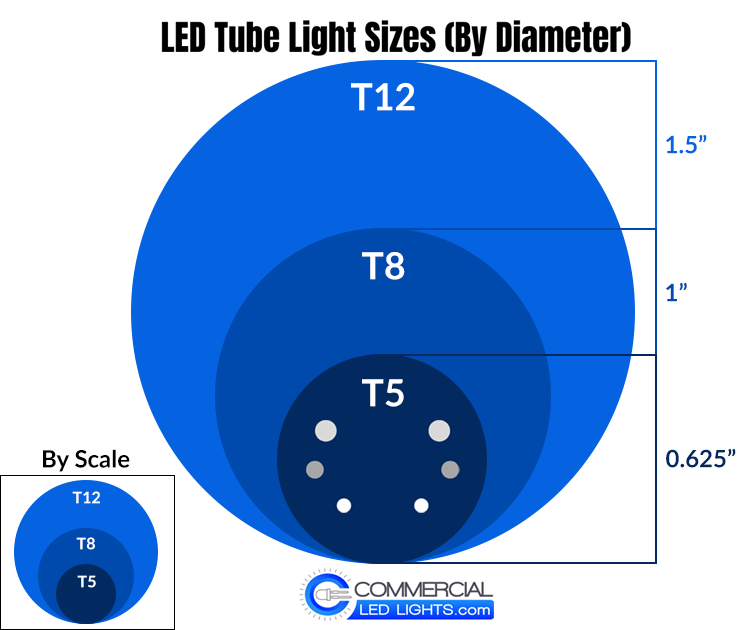
There are a variety of LED tube sizes based on both length and diameter. When it comes to length, the most common type is by far 4 ft. LED T8 Tubes.
Longer tube lengths are typically not recommended as these are fairly inefficient due to unnecessary energy consumption.
When it comes to diameter, the most common tubes are T8 tubes followed by T5’s and T12’s. Here’s a simple breakdown of LED tubes based on diameter.
T8 = 1 inch diameter
T5 = 0.625 inch diameter (5/8 inch)
T12 = 1.5 inch diameter
It’s important to note, T8’s and T12’s are often used interchangeably provided they’re compatible with the existing ballast. We suggest checking the milliamp (mA) requirements of the ballast prior to installation.
LED Tube Light Length
2 foot LED Tubes - These are compact LED tubes measuring 2 feet (approximately 24 inches) in length. They are ideal for smaller spaces or fixtures where a longer tube would not fit. 2 FT led tubes are commonly used in under-cabinet lighting, small office spaces, or in retail display cases where space is limited but quality lighting is needed.
3 foot LED Tubes - Slightly longer than the 2-foot variant, 3-foot LED tubes (around 36 inches) offer a balance between compact design and effective illumination. These are suitable for areas like kitchens, workshops, or small commercial settings. They can be used in both residential and business environments where a 4-foot tube might be too large.
4 foot LED Tubes - These are perhaps the most common length for LED tubes, measuring 4 feet (about 48 inches). They are designed to replace standard fluorescent tubes in a variety of settings. 4 FT tubes are widely used in offices, classrooms, and retail stores. They provide ample illumination and are versatile enough to fit in standard ceiling fixtures and troffers.
8 foot LED Tubes - These long LED tubes, measuring 8 feet (approximately 96 inches), are designed for large spaces and high ceilings where more coverage is needed. 8 FT tubes are ideal for industrial environments, large warehouses, and big-box retail stores. They provide extensive illumination, making them suitable for areas requiring a lot of light over a wide space.
10 foot LED Tubes - 10-foot LED tubes are among the longest LED tube lights available, measuring approximately 120 inches in length. These substantial tubes are designed to provide expansive coverage of light, suitable for very large areas or spaces with high ceilings.
Applications: Perfect for industrial settings, large commercial warehouses, gymnasiums, and certain retail environments that require broad, consistent illumination over a large area.
LED U-Bend Tubes - U-bend LED tubes are shaped in a U-form and are typically used to replace fluorescent U-bend tubes. Their unique shape allows them to fit in fixtures where straight tubes cannot be used. These are often found in office settings, schools, and healthcare facilities, especially in troffer and grid lighting systems. They are excellent for spaces needing efficient lighting without the bulk or length of straight tubes.
Understanding Lamp Types (Plug-n-Play, Direct Wire, Hybrid)
When it comes to installation, it’s important to understand whether or not the tube has a ballast and if it’s compatible with your existing lighting fixture. If you’re replacing existing fluorescent bulbs, certain fixtures will require retrofitting and other custom electrical work before your LEDs can be properly installed. In this section we’re going to break down the difference between direct wire v.s plug-n-play tubes and explain what these differences entail.
Direct wire LED tubes run directly off voltage from the sockets. In other words they’re installed without an electrical ballast which is a device used to limit electrical current flowing through the tube.
On the other hand, plug-n-play LED tubes are designed with an internal ballast that is compatible with the fixtures existing fluorescent ballast without the need of retrofitting or custom electrical work.
Type A - Type A tubes are plug-n-play tubes and are generally compatible with ballasts; however, there are certain exceptions so it’s important to check product specifications and ballast compatibility prior to purchasing a replacement for your fluorescent lamps
Type B - Type B tubes are direct-wire lights that are incompatible with electrical ballasts. In order to install Type B tubes, the ballast will need to be uninstalled from the fixture. In some cases, the electrical sockets will need to be replaced as well in order to ensure the tubes can be wired so that they obtain power directly from the line voltage.
Type A/B - Type A/B tubes are hybrids in that they can operate with a ballast or directly connect to the line voltage. It’s important to note that not every type A/B tube will be compatible with every ballast so checking product specifications is still important prior to making a purchase.

Understanding Color Temperature

Another way LED tubes are differentiated is by their color temperature which is measured in Kelvins. Although the color temperature scale can range from 1,000K to 10,000K, we’re going to talk about the most common and practical color temperatures for tube lighting purposes.
3000K LED Tubes - 3000K LED tubes emit a warm white light, creating a cozy and inviting atmosphere. These tubes are ideal for residential settings like living rooms and bedrooms, where a warm and relaxing ambiance is desired. These tubes are also commonly used in hospitality settings such as restaurants and hotel lobbies to create a welcoming environment.
3500K LED Tubes - 3500K LED tubes emit a neutral white light that strikes a balance between warm and cool tones. The color temperature of 3500 Kelvin falls in the middle of the spectrum, providing a clean and clear light. These are ideal for environments where both comfort and clarity are important. They are commonly used in office settings, retail spaces, and residential areas like kitchens and bathrooms.
4000K LED Tubes - 4000K LED tubes produce a neutral or cool white light that is brighter and crisper than 3000K but without the harshness of higher Kelvin temperatures. This color temperature strikes a balance between warm and cool light. These tubes are versatile and suitable for a variety of settings, including office spaces, kitchens, bathrooms, and retail stores. They provide clear visibility without being too stark, making them ideal for task lighting, general workspace illumination.
5000K LED Tubes - 5000K LED tubes offer a bright and vibrant light that closely resembles natural daylight. This color temperature is on the cooler side of the spectrum and helps in enhancing concentration and alertness. These are perfect for workspaces, industrial settings, and anywhere high levels of focus are required. They are also used in retail environments to accurately display products. The daylight-like quality makes them suitable for studios, workshops, and garages, where clear, precise visibility is crucial for detailed tasks and operations.
6000K LED Tubes - 6000K LED tubes produce a very cool, almost daylight-like white light. This color temperature is on the higher end of the Kelvin scale and often has a slightly bluish tint. It's known for its crisp and vibrant quality. These are best suited for areas that require a high level of brightness and clarity. Typical applications include industrial settings, garages, laboratories, and some retail environments.
The picture below illustrates the differences in color temperature and provides an idea of what each type of LED tube looks like.
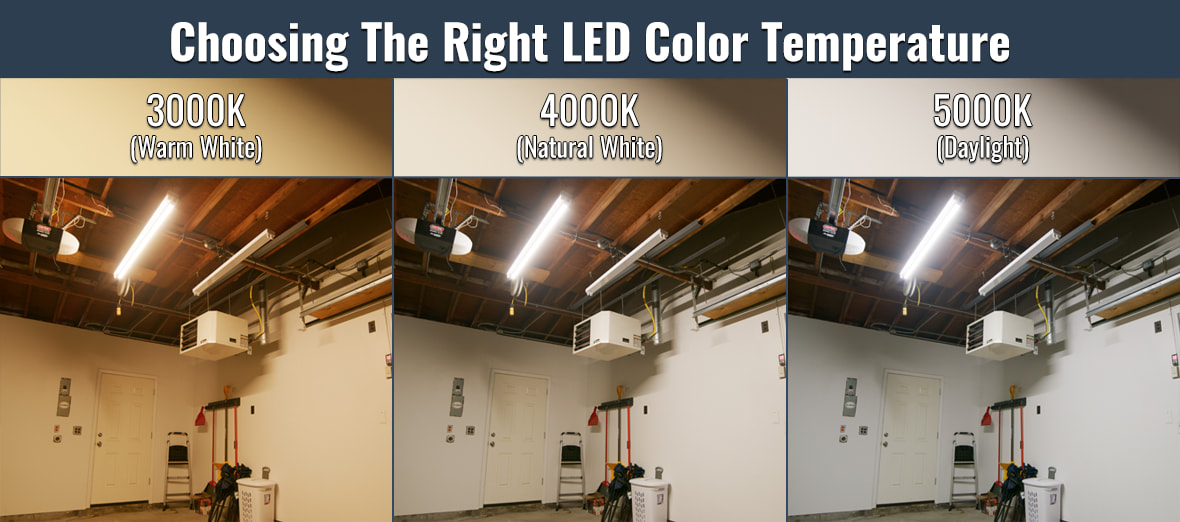
Understanding Brightness (Wattage & Lumen Output)
LED lights require a fraction of the energy used by traditional lighting technologies such as fluorescent to produce the same amount of light, measured in lumens. When trying to choose the appropriate brightness for your lighting application, it’s best to determine the desired lumen output as opposed to watts.
Selecting the right wattage is critical to ensure not only proper lighting for an area, but also to maximize energy efficiency. When combined with a comprehensive photometric plan tailored for the specific application, end users will enjoy optimal performance and the full potential LED technology has to offer. Considering the long lifespan of LED tubes, it is important to get this right from the start.
LED v.s Fluorescent Tubes
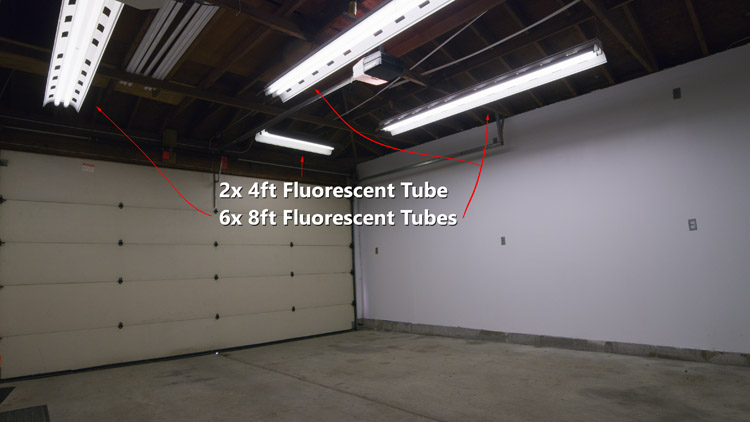

Tube lighting has been the dominant lighting choice for commercial and industrial applications for decades. These lights, invented in 1903, have usually been of the fluorescent type. Fluorescent lights are low-pressure mercury vapor gas discharge lights, which generate their illumination by running an electric current through mercury vapor, causing it to generate short wave ultraviolet (UV) light. This UV light then excites the phosphor inside the tube, causing it to glow which produces the actual visible light.
While fluorescent tubes have been the default lighting option for nearly a century, they have begun to be surpassed if not replaced by LED tube lights. There are big differences between these two types of tube lights, most of which surround costs and the quality of the actual light produced. On paper fluorescent tubes and lighting systems are far less expensive than LED options, which encourages many buyers to choose this option. However, this is a false economy as fluorescent tubes have a far shorter lifespan than LED tubes.
The best one can expect out of fluorescent tubes is a lifespan of around 30,000 hours, whereas LED tubes typically last 50,000 hours or more. LEDs are not as sensitive to temperature extremes and on/off cycling as their fluorescent counterparts, which is in large part the reason for their far better lifespan consistency and improved resilience.
LED bulbs also have far superior energy consumption when compared to fluorescent tube lights. In fact, LEDs are about 20% or more energy efficient than a comparable fluorescent while producing the same amount of light (lumens). The energy-efficiency and cost savings of LED tubes v.s fluorescent tube lamps are demonstrated in a Scientific World Journal published by the NCBI. According to the study,
“In current market variable LED tubes are available which offer light output levels similar to 36W fluorescent tubes. By substituting a 36W T8 fluorescent tube by a 19W LED tube can save up to 48%” (NCBI, 2014, Cost-Benefit Analysis and Emission Reduction of Energy Efficient Lighting at the Universiti Tenaga Nasional)
Finally, the last difference between fluorescent and LED tubes is the quality of the light produced. Lighting quality is quantified using the Color Rendering Index (CRI), which measures a light's accuracy in reproducing color. This scale ranges from zero to 100 - the higher the rating, the more accurate the light. For reference, natural sunlight and incandescent bulbs have a CRI of 100. Fluorescent tubes typically have a CRI of up to 70, whereas LED tubes range between 80-95. While it might not seem like a big difference on paper, in reality it makes a noticeable difference in visibility. The dramatically improved visibility from higher CRI lighting not only improves workplace safety, but also makes for a more pleasant environment for customers and employees alike - contributing to better efficiency and sales.
LED T8 Bulbs
LED T8 lights are commonly used in office lighting fixtures such as troffers. In general, these bulbs are ideal for indoor commercial lighting applications such as office buildings, storage facilities, and garages. LED T8 bulbs are ideal for these applications due to the high energy efficiency, low maintenance, and long lasting life. T8 tubes are most ideal in climate controlled environments with standard ceiling heights.
Many businesses are switching from T8 fluorescent tubes to LEDs due to the improved energy-efficiency along with a variety of other benefits. When it comes to indoor facilities with standard ceiling heights, 4 ft. tubes with 1800 Lumens or less are most ideal. For taller ceilings that require high bay lighting, you’ll want to use tubes that have more than 2000 Lumens in order to ensure adequate illumination.
LED Tube Light Applications
LED tube lights are versatile lighting solutions widely adopted in various settings, thanks to their sleek design, efficient illumination, and energy-saving benefits. Here's a look at some of the most common applications for LED tube lights:
Commercial Offices: In office environments, LED tube lights are favored for their ability to provide bright, consistent light. This helps in minimizing glare, which can reduce eye strain for employees, enhancing comfort and productivity.
Educational Institutions: Schools and universities often install LED tube lights to create an optimal learning environment. The even distribution of light is key to maintaining visibility and focus in classrooms and lecture halls.
Healthcare Facilities: For healthcare settings like hospitals and clinics, LED tube lights are a preferred choice. They offer clear and consistent lighting, which is essential for various medical tasks, including examinations and surgical procedures.
Residential Spaces: LED tube lights are increasingly popular in homes, particularly in areas like kitchens and living rooms. They provide sufficient lighting and add a contemporary touch to the interior décor.
Industrial Settings: Certain LED tube lights are engineered for durability and longevity, making them suitable for challenging environments like warehouses and factories, where reliable lighting is crucial.
Hospitality Industry: The hospitality sector, including hotels and restaurants, uses LED tube lights to create a warm and inviting atmosphere for guests, combining aesthetics with functionality.

Retail Stores: LED tube lights in retail settings contribute to an appealing shopping experience. They provide excellent illumination for product displays, enhancing colors and details without creating overpowering shadows.
Conference Rooms: In meeting and conference spaces, LED tube lights ensure that the area is well-lit, facilitating effective communication and presentations.
Corridors and Hallways: For the corridors and hallways in commercial buildings and residential complexes, LED tube lights are a common choice. They ensure these passageways are safe and well illuminated, contributing to the overall safety and navigability of the space.
LED Tube Light Cost
The cost of LED tube lights can vary significantly depending on various factors, including the type of LED bulb, its features, the quality of materials used, and the brand.
Generally, the price range for basic LED tube lights starts around $7 to $15 each. These standard bulbs are suitable for basic lighting needs and are a popular choice for replacing traditional fluorescent tubes due to their energy efficiency and longer lifespan.
However, more advanced LED tube lights, which offer enhanced features such as greater lumens (brightness), improved color rendering, extended lifespan, and specialized color temperatures, can be priced higher. Features like dimmability, compatibility with lighting control systems, and robust construction for specific environments (such as damp locations) also contribute to a higher price point.
It’s noteworthy that exceptionally low-priced tube lamps, sometimes found under $6.99 per tube, may not always provide the best quality. They could compromise on aspects like energy efficiency, color consistency, or durability. On the flip side, paying a bit more can often result in bulbs that offer superior light quality, energy savings, and a longer operational life, leading to cost savings over time.
In our store, the range of LED tube lamps spans from approximately $6.99 to $12.95 per tube. This variation in price reflects differences in bulb specifications such as wattage, length, light output, color temperature, and energy efficiency ratings. We ensure that our pricing reflects a combination of quality and value, guaranteeing products that meet industry standards for performance and safety while providing the benefits of LED technology.
When considering LED tubes, it's important to look beyond the initial purchase price. Factors like energy consumption, lifespan, and the frequency of bulb replacements play a significant role in the overall cost-effectiveness.
LED Tube Light Brands
This section discusses popular LED tube light brands offered at our store. These brands include but are not limited to the following,
Satco Lighting - Satco LED tubes are designed to offer a high-performing, energy-efficient alternative to traditional fluorescent tubes, making them a popular choice for a variety of lighting applications. These tubes are available in a range of sizes and color temperatures, allowing for customization to meet specific lighting requirements. Known for their longevity and energy savings, Satco LED tubes significantly reduce the need for frequent replacements and lower electricity costs. They are also environmentally friendly, emitting less heat and containing no harmful substances like mercury.
Commercial LED - Commercial LED tubes are becoming increasingly popular in commercial establishments. They offer a variety of advantages over traditional lighting, including energy savings, improved visibility, and longer life. LED tubes are available in different shapes and sizes, making them suitable for a variety of applications. They are also highly efficient, consuming up to 80% less energy than traditional lighting. Additionally, they produce a higher quality light with less glare. LED tubes are also eco-friendly, containing no hazardous materials. They are also safer to use, as they produce very little heat. LED tubes are a great choice for businesses looking to reduce their electricity bills and improve the quality of their lighting.
Keystone - Keystone's extensive range of LED tubes stands out for its adaptability and versatility, catering to virtually every tube style fixture in current use. Their collection includes LED tubes compatible with existing ballasts, making them ideal for easy upgrades from traditional fluorescent tubes without the need for rewiring. For those seeking a more energy-efficient solution, Keystone also offers LED tubes that can be directly wired into the power source, bypassing the need for a ballast altogether. This direct wiring approach not only enhances energy efficiency but also reduces maintenance concerns associated with ballasts.
Topaz Lighting - Topaz LED tube lights come in various color temperatures and sizes, catering to diverse lighting needs in both commercial and residential settings. They are known for their long lifespan, significantly reducing maintenance and replacement costs. Additionally, Topaz LED tubes often feature easy installation processes, with options for both ballast-compatible and ballast-bypass configurations, making them versatile for retrofitting existing fixtures or new installations.
Straits Lighting - Straits LED tubes contain some of the best lumens-per-watt on the market. These tube lights use state-of-the-art LED technology to maximize illumination while minimizing energy cost. When it comes to LED tube lights, Straits Lighting has several different product lines. This includes the MX-Series which replaces the legacy X-Series LED tubes. Other popular Straits LED tubes include the Streamline Series which has T8 tubes as well as T5 tubes in their collection.
Frequently Asked Questions
Q. How do you convert fluorescent tubes to LED?
Converting fluorescent tubes to LED typically involves replacing your old fluorescent tubes with LED tubes and adjusting the fixture to suit the new lighting. This process often includes bypassing or removing the existing ballast since LED tubes generally do not require a ballast to function. After ensuring the power is off, you remove the fluorescent tubes, bypass or remove the ballast, and then rewire the fixture if necessary before installing the LED tubes. This conversion not only provides more energy-efficient lighting but also reduces maintenance needs.
Q. How do you direct-wire LED tubes?
Direct-wiring LED tubes involves safely removing the existing fluorescent tubes and ballast from your light fixture and then rewiring the fixture so that the LED tubes are connected directly to the power source. This is often known as a ballast bypass. First, you'll need to ensure the power is off and safely disconnect the old ballast. Then, you'll rewire the fixture, typically by connecting the live wire to one end and the neutral wire to the other end. Once you've securely connected the wires according to the manufacturer's instructions for your specific LED tubes, you can install the new tubes and test the setup.
Q. How do you bypass a ballast to install LED tubes?
Bypassing a ballast to install LED tubes follows a similar approach to direct-wiring, where you disconnect and remove the existing ballast and reroute the power supply wires directly to the lamp holders. This process makes sure that the electrical current flows directly into the LED tubes without passing through a ballast. It's a straightforward process but requires attention to detail and a basic understanding of electrical wiring. If you're not familiar with electrical work, it's always advisable to consult with or hire a qualified electrician to ensure safety and proper installation.
Q. Which is better, single ended or double-ended LED tubes?
This largely depends on your specific needs and the existing fixtures. Single-ended LED tubes are wired at one end only, making the wiring process straightforward but requiring careful attention to the live and neutral connections. Double-ended LED tubes, on the other hand, are wired at both ends and are often considered easier to install, especially in fixtures originally designed for fluorescent tubes. Double-ended tubes can be more convenient for retrofitting existing fixtures, but ultimately, the best choice depends on your fixture type and personal preference for installation.
LED Tube Light Resources
In this episode:
- [0:46] Fluorescent v.s LEDs - What is an LED Tube Light v.s Fluorescent Tube Light, which one is better, etc.
- [2:55] Types of LED Tubes - Breaks down Type A / Type B / A+B Hybrids.
- [8:12] LED Tube Sizes - T12 / T8 / T5, and different lengths.
- [11:00] Color Temperature (Kelvin) - Explaining the difference between the different kelvin temperatures of LED bulbs (3000K, 4000K, 5000K, etc)
- [15:50] Brightness - Wattage/Lumens/Foot Candles
- [23:30] Wiring / Retrofitting LED Tubes
- [26:18] Common Questions about LED Tube Lights

